Discover 11 hidden attractions, cool sights, and unusual things to do in Daejeon (South Korea). Don't miss out on these must-see attractions: Expo Science Park, Daejeon World Cup Stadium, and Bomunsan. Also, be sure to include Daejeon Museum of Art in your itinerary.
Below, you can find the list of the most amazing places you should visit in Daejeon (Daejeon).
Table of Contents
Expo Science Park
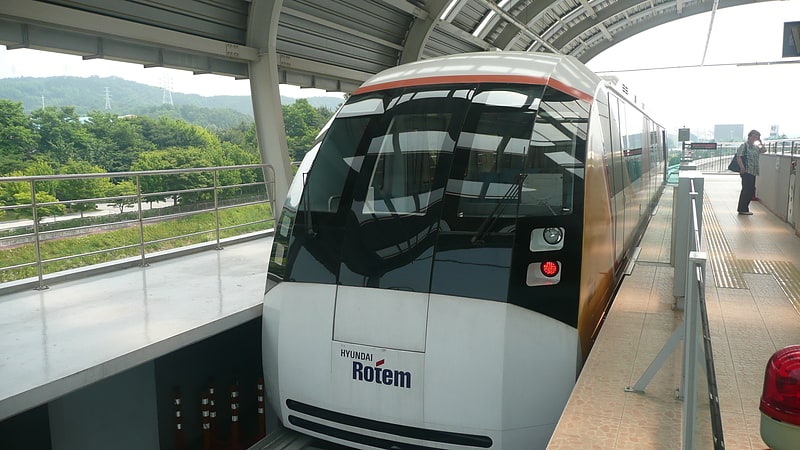
Also known as: 엑스포과학공원
Expo Science Park is a science park in Yuseong-gu to the north of Daejeon, South Korea, built for Taejŏn Expo '93. Facilities at Expo Park included a garden, amusement park, and observation tower. While the tower and some buildings remain, most of the expo buildings have now been removed. As of 2018, the site is hosting the headquarters complex for the Institute for Basic Science.
In September 2014, the Ministry of Science, ICT and Future Planning announced that Expo Science Park would be demolished in stages from November 2014 to August 2015. However, in recognition of their historic value, Hanbit Tower, the international conference room, and the simulation pavilion would be kept. In November 2014, the Shinsegae consortium won a bid to build the science complex within the park.
In September 2017, Studio Cube, a state-run film studio complex on the site of the park, formally opened its doors to film and drama production.
In August 2021, the 2nd Expo Bridge, connecting the park with Seo-gu, opened.[1]
Address: 유성구 대덕대로 516, 305-340 대전광역시 (유성구)
Daejeon World Cup Stadium
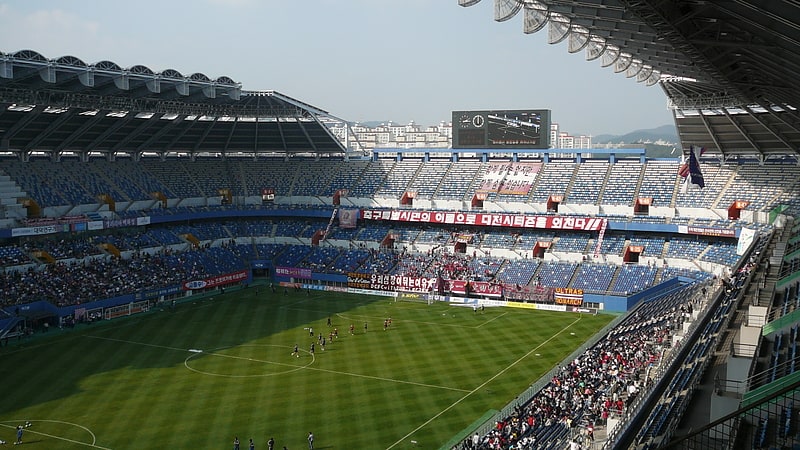
Also known as: 대전월드컵경기장
Stadium in Daejeon, South Korea. Daejeon World Cup Stadium is a football stadium in the South Korean city of Daejeon. It was used to host some matches at the 2002 FIFA World Cup hosted by South Korea and Japan. The stadium displayed a sophisticated structural dynamism, eliminating decorative decoration. Precast Concrete method considering construction and economical efficiency was used. After the World Cup, the stadium was planned to be a multi-purpose sports park, which has a comprehensive sports center and commercial and cultural facilities in the middle of the region. It is now the home stadium of Daejeon Hana Citizen with a capacity of 40,535 seats, replacing Daejeon Sports Complex.[2]
Address: 32 World Cup-daero, Yuseong-gu, 34148 Daejeon (유성구)
Bomunsan
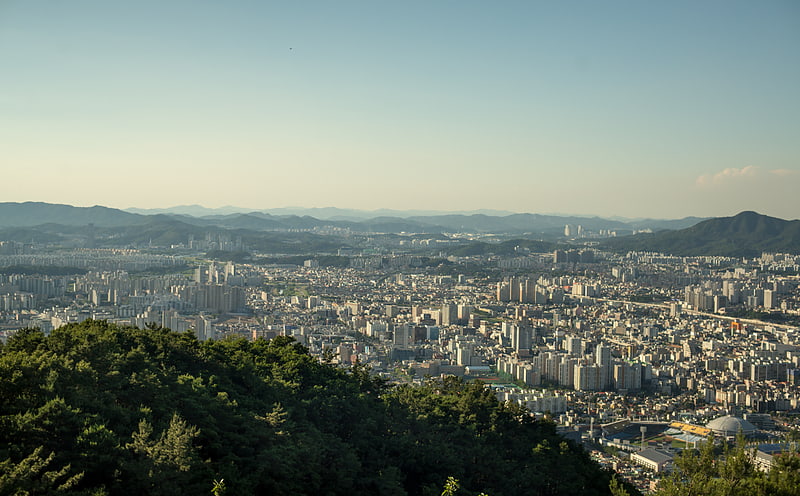
Bomunsan, is an urban mountain park in the south of Daejeon Metropolitan City in Korea, with a peak elevation of 457.6 m. Known as one of the Eight Great Views Daejeon, Bomunsan was established as a park in 1965, and contains multiple culture, sports, and heritage sites, some dating back as far as the Bronze Age.
The vicinity of the mountain is home to multiple amusement, sports, and health facilities including an outdoor concert hall, a Youth Square, and O-World amusement park and zoo, and the Bomunsan Forest Healing Center. Cultural heritage sites include the figure of a seated Buddha figure carved into the mountainside (c. late Goryeo dynasty), and the reconstructed ruins of an ancient fortress, as well as multiple Buddhist temples both within and bordering the park.[3]
Daejeon Museum of Art
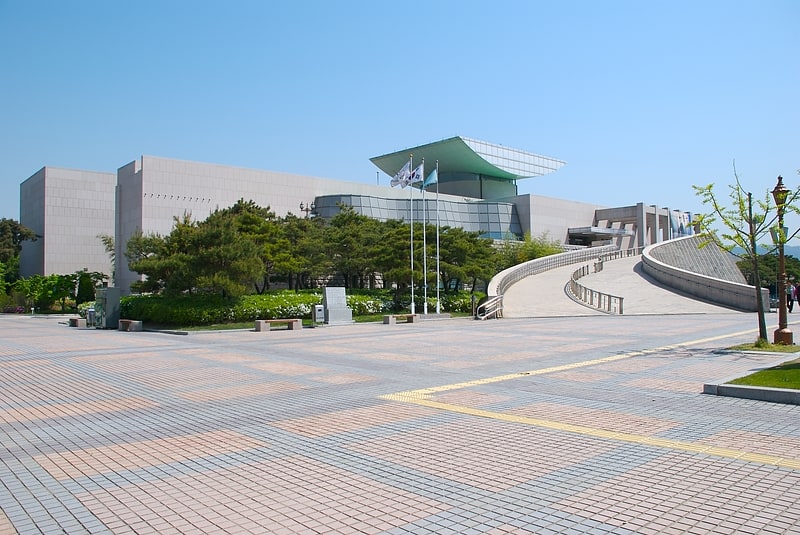
Also known as: 대전광역시립미술관
Art museum in Daejeon, South Korea. The Daejeon Museum of Art is located at 396 Mannyeon-dong, Seo-gu, across the river from the Expo Science Park, in Daejeon, South Korea. It opened on April 15, 1998.
It has featured modern art from both domestic and foreign artists. Shows have included "The Horizen of Daejeon Art" (local art, featuring Cho Pyung-hwi and An Chi-in) and The Exhibition of Park Seung-moo. The facility has a floor space of just over 8,400 m². It also includes an outdoor sculpture park.[4]
Address: Mannyeon-dong, 둔산대로 155, 302-150 Seo-gu (서구)
Daejeon Hanbat Baseball Stadium
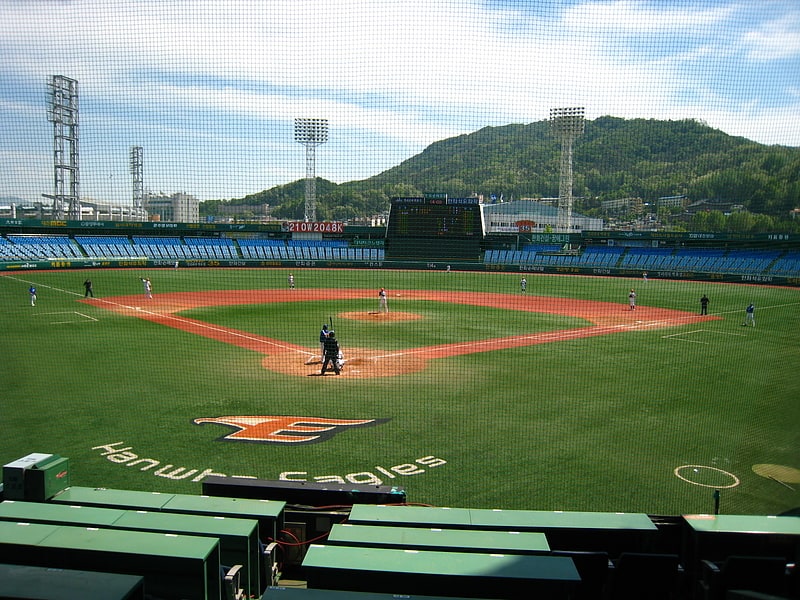
Also known as: 한밭종합운동장 야구장
Stadium in Daejeon, South Korea. The Daejeon Hanbat Baseball Stadium, also known as the Hanwha Life Eagles Park due to sponsorship reasons, is a baseball park in Daejeon, South Korea. The stadium is located in the vicinity of Daejeon Station. Located in Daejeon Hanbat Sports Complex with other main sports facilities in Daejeon, it is currently used as the primary home ballpark of Hanwha Eagles of the KBO League.
Built in 1964, the ballpark was once nicknamed as the "Ping-Pong Table" for having the smallest outfield dimension among professional ballparks in South Korea. But the ballpark underwent a series of large scale renovations with capacity extension from 2011 winter to 2012 spring, and outfield expansion in the winter of 2012. After the renovation, the ballpark had a second-largest outfield dimension in South Korea at the time, and a seating capacity of 13,000.
From 1982 to 1984, it was the home ballpark of the OB Bears. In 1986, the Binggrae Eagles debuted as the KBO's seventh franchise, and they took on Daejeon Hanbat Baseball Stadium as their home.[5]
Address: 373, Daejong-ro, Jung-gu, 35021 Daejeon (중구)
National Science Museum
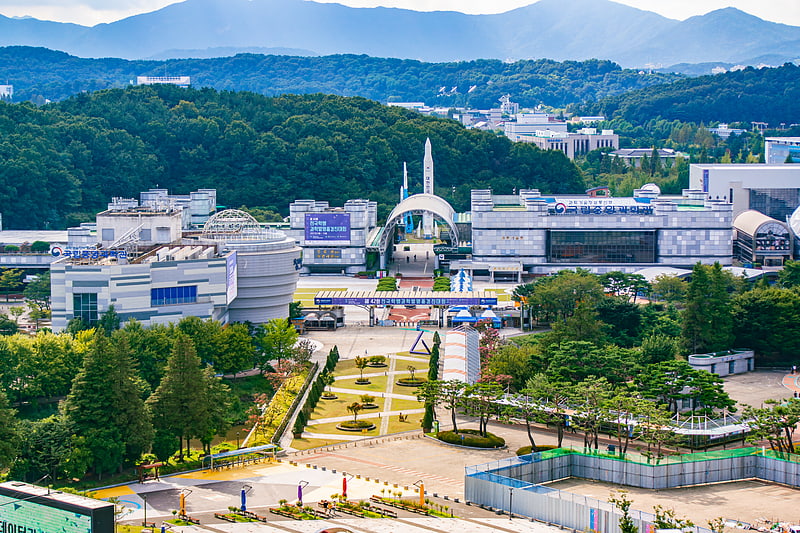
Also known as: 국립중앙과학관
Modern science and technology museum. The National Science Museum is a national science museum in Daejeon, South Korea. It first opened in Seoul in 1926 and became a national museum in 1949. It moved to its current location in 1990 which is across the street from Expo Park which housed the Daejeon Expo in 1993. It received 1,795,076 visitors in 2017.[6]
Address: 481 Daedeok-daero, Guseong-dong, 305-338 Yuseong-gu (유성구)
Sikjangsan
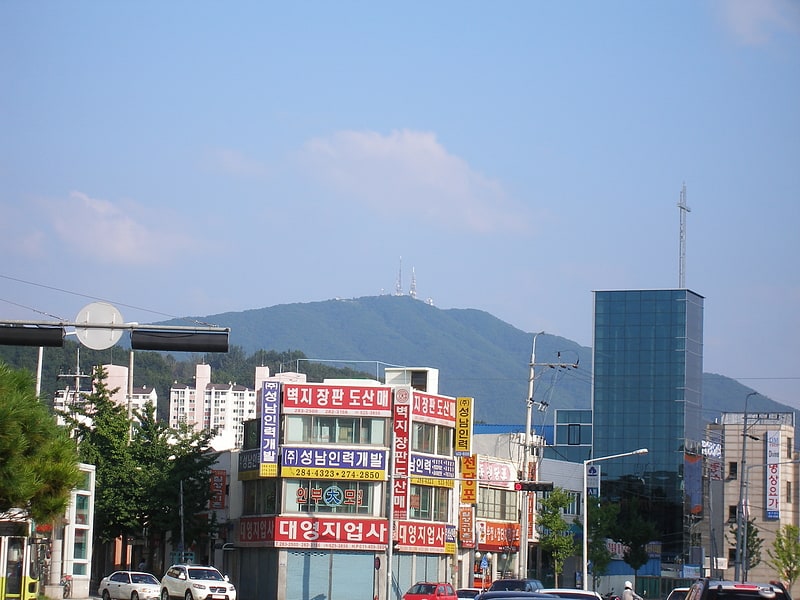
Also known as: 식장산
Mountain in South Korea. Sikjangsan is a mountain located in Dong-gu, Daejeon, South Korea. It has an elevation of 596 m.[7]
Musangsa
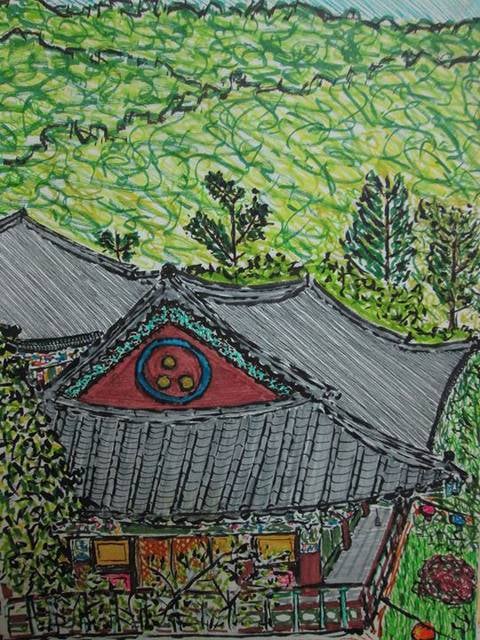
Temple
Address: 129 Hyangjeoksan-gil, Eomsa-myeon, Daejeon
Gyeryong

Also known as: 계룡시
City in South Korea. Gyeryong is a city in southeastern South Chungcheong province, South Korea. The current mayor is Choi Hong-Mook. The city was created in 2003, by a split from Nonsan city, following prolonged local agitation.
Approximately half (47%) of the city's inhabitants are either serving in the South Korean armed forces, or are family of service members. The city hosts several major Korean and international military conferences. It was around 1993 that this area, which was a typical rural area, turned into the best military location in Korea. A large-scale military facility was opened with the relocation of Gyeryongdae from 1989 to 1993, and military families from all over the country were introduced. In 1989, the Army and Air Force headquarters first moved to Gyeryongdae. Four years later, the navy headquarters was completed in 1993.
Gyeryong Mountain (Korean: 계룡산), adjacent to the city, is considered the mountain with the most qi (spiritual energy) in Korea. It is also the heart of Gyeryongsan National Park. As of December 2020, the total population of the city was 42,822.[8]
Yuseong District

Also known as: 유성구
Yuseong District is a gu of Daejeon, South Korea, known for high tech industries, Daejeon Expo '93, Daedeok Science Town and the Yuseong Special Tourism District. Daejeon Islamic Center is also located in Kung-dong, Yuseong-gu. The Science Town is the core of the International Science and Business Belt.[9]
Address: Bomyeongdong Yuseonggu, Daejeon (유성구)
Government Complex

Also known as: 정부대전청사
Government office in Daejeon, South Korea. The Government Complex, Daejeon, which is located in Dunsan-dong, Seo-gu at the city of Daejeon, is a set of four buildings holding the following offices for the national government of South Korea:
- Korea Customs Service
- Public Procurement Service
- Cultural Heritage Administration
- National Statistical Office
- Korean Intellectual Property Office
- Small and Medium Business Administration
- Korea Forest Service
- Military Manpower Administration
- National Archives of Korea
The area of the Government Complex, Daejeon is 518,338 ㎡. The size of the building is 4 buildings and auxiliary buildings with 20 stories high. The total floor area is also 240,980 ㎡. The construction period is 1993.9.15 to 1997.12.20.[10]